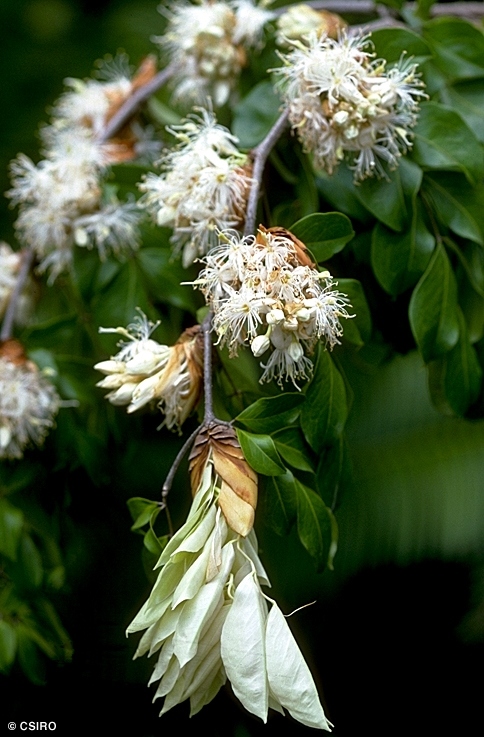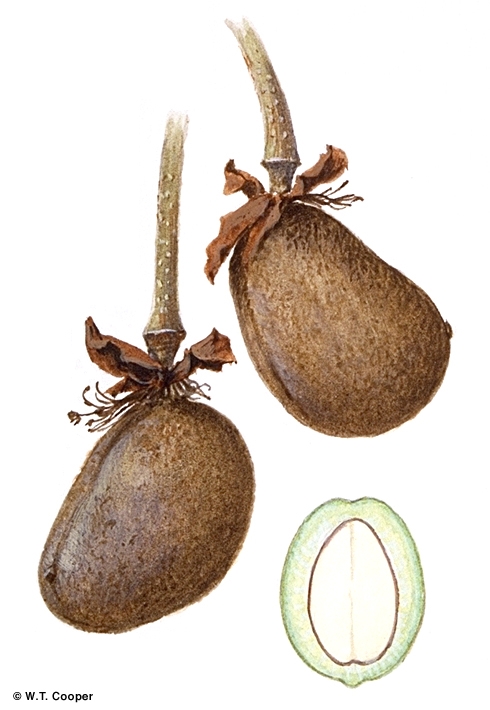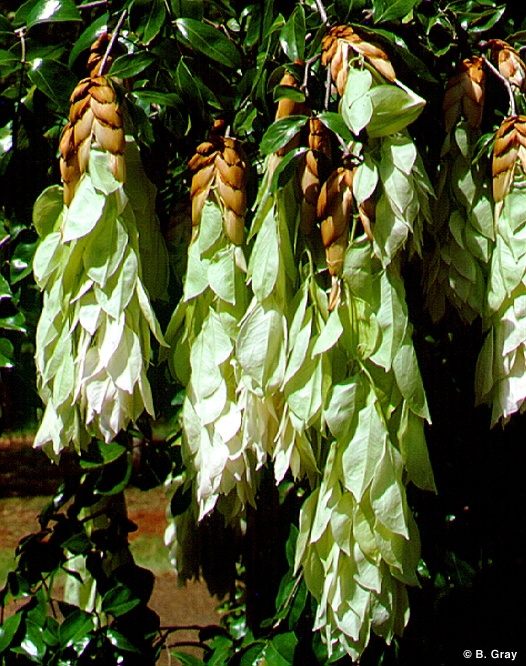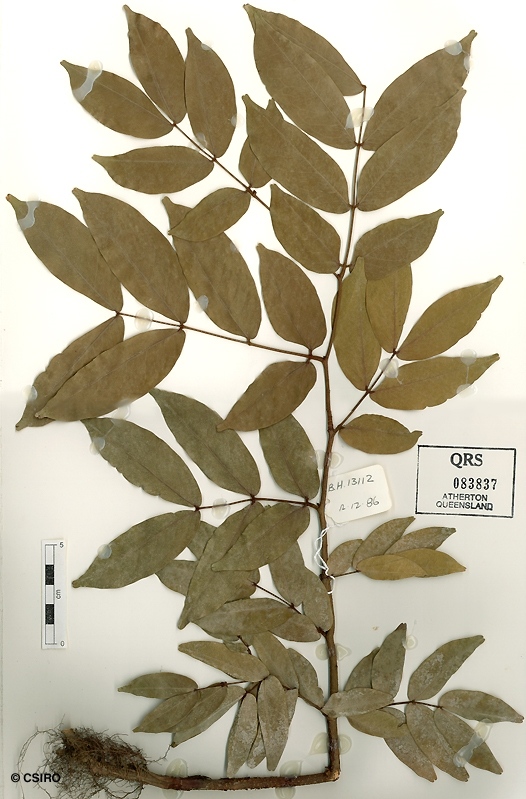Australian Tropical Rainforest Plants - Online edition
Maniltoa lenticellata C.T.White







White, C.T. (1927) J. Arnold Arbor. 8: 130. Type: PAPUA [PAPUA NEW GUINEA]. Northern Division: Sageri, July 1922, [fl], C. E. Lane-Poole 203 (holotype: BRI; isotype: A).
Cascading Maniltoa; Cascading Bean; Maniltoa; Maniltoa, Cascading
Bark rather hard to cut. A thin cream or pale brown layer usually present in the outer blaze. Living bark rather strong and fibrous.
Leaflet stalk short. Stipules long and narrow 60-100 x up to 2.5 mm, but shed early and only present on very young shoots with white or pink leaves. Stipular scars rarely visible. Leaflet blades about 4.5-10 x 2-5 cm.
Cotyledons fleshy, lacking venation. First pair of leaves compound with 8-10 leaflets. Petiole and rhachis hairy. Stipules linear. At the tenth leaf stage: leaflet blades unequal-sided, apex acuminate and emarginate, base obtuse, glabrous; petiole and rhachis hairy; stipules linear, about 20 mm or more x 1-2 mm wide, shed early; terminal bud consists of several deciduous scale leaves enclosing 1-3 compound leaves; scale leaves fall early leaving distinct scars. Seed germination time 13 days.
Widespread in CYP from the McIlwraith Range to Torres Strait, and in NEQ, usually at low elevations not exceeding 100 m. Grows in rain forest and monsoon forest. Also occurs in New Guinea. If this species is conspecific with M. schefferi then the species has a wider distribution in Malesia.
This tree is becoming popular in horticulture as a tree in larger gardens producing outstanding cream to pinkish flushes of new growth.





